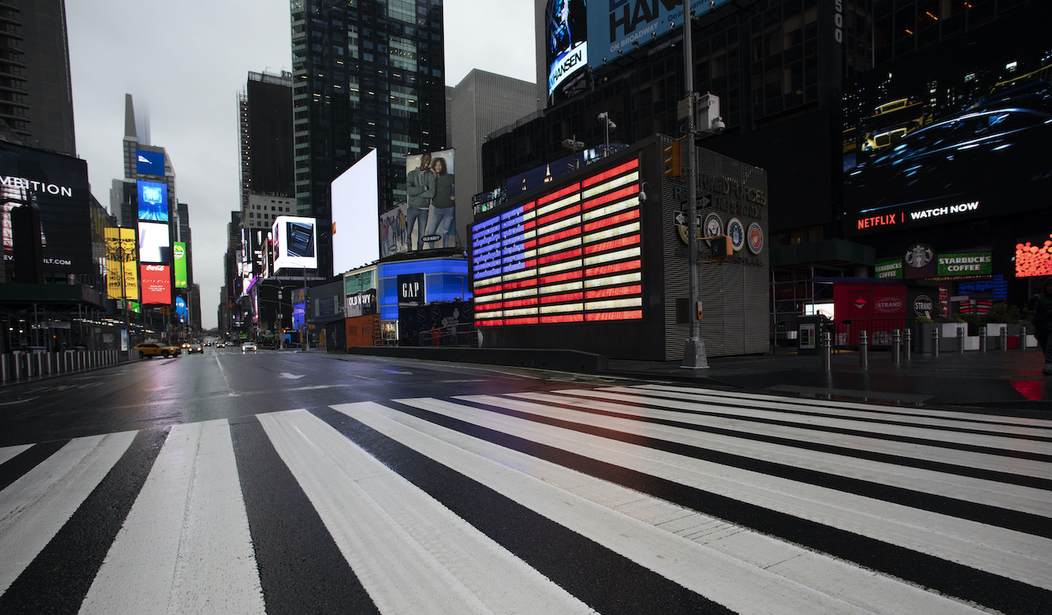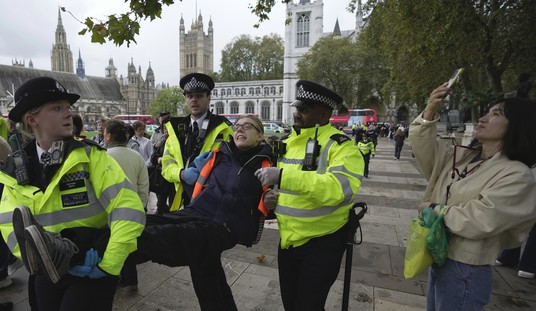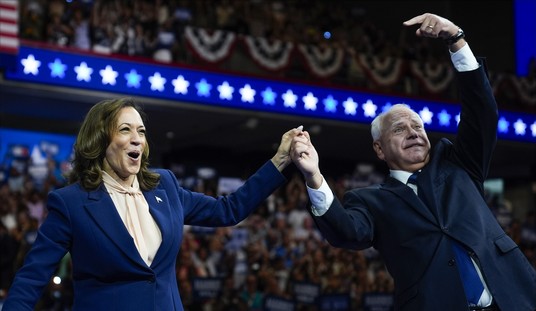Have you been downtown recently? I try to avoid going into Washington, D.C., as often as possible, but my job requires it with some regularity. Usually I am on the Hill covering Congress, but earlier this week I had to spend some time downtown.
To say I was shocked is an understatement. Before the Covid lockdown began in March 2020, downtown D.C. was alive and thriving. Today, the streets aren’t quite deserted and the office buildings do have a few people coming and going. But everywhere you look, you see … emptiness.
People are coming back to the Hill, but that’s not the case for downtown D.C. or the rest of the big cities around America, especially in the near-empty office buildings and the surrounding businesses that depended upon the employees working in them.
The nearly deserted commercial office complexes in central-city America won’t be coming back to life any time soon. And that’s why a huge economic crash is coming, one that is all but unavoidable, thanks to power-grabbing politicians and bureaucrats, aspiring public health czars, and the Biden-era Democratic Party’s love for the lockdown.
Among the unintended consequences of the Covid lockdown is the discovery by Millennials and Generation Zers that they like working from home. They can dress as they wish, control much more of their time, be more productive, and remain closer to family, friends, and neighbors.
That means they no longer have to live near their workplaces and endure the high costs of single-family, condo, and apartment city living, unpredictable transit systems, soaring crime rates, and decaying social and economic structures that typify so much of America’s inner-urban/close-in suburban landscapes these days. Plus, you don’t have to wear a mask at home!
In other words, as Cameron Arcand noted recently in the Washington Examiner, they can move to the suburbs and to the smaller cities where the cost of living is lower, commutes aren’t nearly as hellish, and intact neighborhoods remain viable and even vibrant socially, economically and spiritually:
The pandemic served as a brutal wake-up call for people to trade in overpriced apartments for tract housing, as working in an office was no longer required for most white-collar occupations once lockdowns began.
For the economic hub of Manhattan, a survey taken by the Partnership for New York City revealed that a meager 10% of office employees in New York returned to the office as of March 2021, with 56% expected to continue to work remotely at least part-time once their employers decide to return in-person.
Thus for millions of white-collar Americans, Zoom meetings and hybrid schedules of alternating days of working from home and office are now almost certainly a permanent feature of the workplace.
For other millions, it means moving from the high taxes, riots, cancel culture tyranny, re-education camps masquerading as public schools, deteriorating infrastructures, and power-hungry politicians and bureaucrats of Blue States like California, New York, and Illinois, and heading to Texas, Florida, South Dakota, or another of the Red States that never bought into or are rapidly leaving the lockdown insanity behind. Elon Musk’s move from California to Texas is only among the most visible examples.
This workplace trend will accelerate the population trends of the past decade that saw huge shifts of people and resources from the aging, crumbling Blue States to the growing Red States. Congressional representation for the Red States is being strengthened by this trend, too.
That’s great news for the Red States, but it’s far from unalloyed goodness for the near-term national economy, because every near-empty downtown office and residential living complex represents millions of dollars invested going bad, customers who stop getting lunch at nearby restaurants and delis, dry cleaners and office supply shops with vacant signs in the windows, and parking garages full of empty spaces signifying lost revenues.
Nearly a year ago, Aaron Renn, an urban analyst writing for Governing Magazine, pointed to three looming consequences of the lockdown for America’s downtowns, beginning with the plunge in tourism:
The pandemic has dealt American downtowns severe blows across multiple dimensions. The first is the impact on tourism and visitor-related spending. The convention and events business is a big pillar of economic activity in many downtowns, and some of them rely heavily on tourism as well. This supports not just the hotel industry but also restaurants, clubs and other attractions. This industry has all but been shut down, and there’s little prospect of an immediate bounceback. This puts a lot of the businesses that depend on visitors at risk of shutting down permanently.
Second, Renn pointed to the tax impact (but note that he ignores declining property tax revenues generated by commercial buildings):
Special downtown fees targeting visitors, such as hotel taxes and supplemental downtown food and beverage taxes, provide revenues that pay for things like debt service on facilities and the local convention and visitors bureau. This will necessitate some kind of bailout for them, and may also reduce tourism marketing spending, further inhibiting a comeback.
Third, Renn acknowledged the impact of working from home:
Another challenge will be from increased working from home. Whether or not there will be a major permanent uptick in remote work remains to be seen, but it’s hard to imagine the share of people working remotely doing anything other than going up. This will reduce downtown office demand and employee headcount …
“Some establishments that might survive the loss of tourism business won’t be able to overcome the loss of office-worker customers as well. And when these major companies finally do summon their employees back to the office, they may discover that it’s to an environment denuded of many of the amenities that made downtown an attractive corporate location.
Renn was looking ahead from a vantage point of only a couple months into the lockdown that has now steamed right past the one-year mark and in many Blue State jurisdictions shows little sign of loosening up.
But even if the lockdown ends everywhere tomorrow, the after-effects will be felt for decades to come, thanks to the working-from-home shift in the workplace paradigm.
I’ve been unable to locate a credible estimate for the total value of all commercial properties in America’s biggest cities, but LendingTree puts the value of residential properties there at nearly $33 trillion. If big-city residential properties lose only 10 percent of their value due to young white collars heading to the suburbs, watching $3.3 trillion evaporate won’t be easy.
To get an idea of the severity of economic consequences of the coming hollowing-out of downtown office buildings, consider the Empire State Building (ESB) in downtown Manhattan.
Jason Barr and Gabriel Alhfeld estimated the ESB’s value at $2.3 billion two years ago. They estimate the annual growth rate in the ESB’s market value at 5.8 percent. But what if 25 percent of the ESB’s rentable commercial floor space goes empty in the next five years? That 5.8 percent market value will turn deep red.
Now multiply that loss in value in Gotham by hundreds of times in every big city and you have a prescription for something much worse than an economic haircut.










Join the conversation as a VIP Member